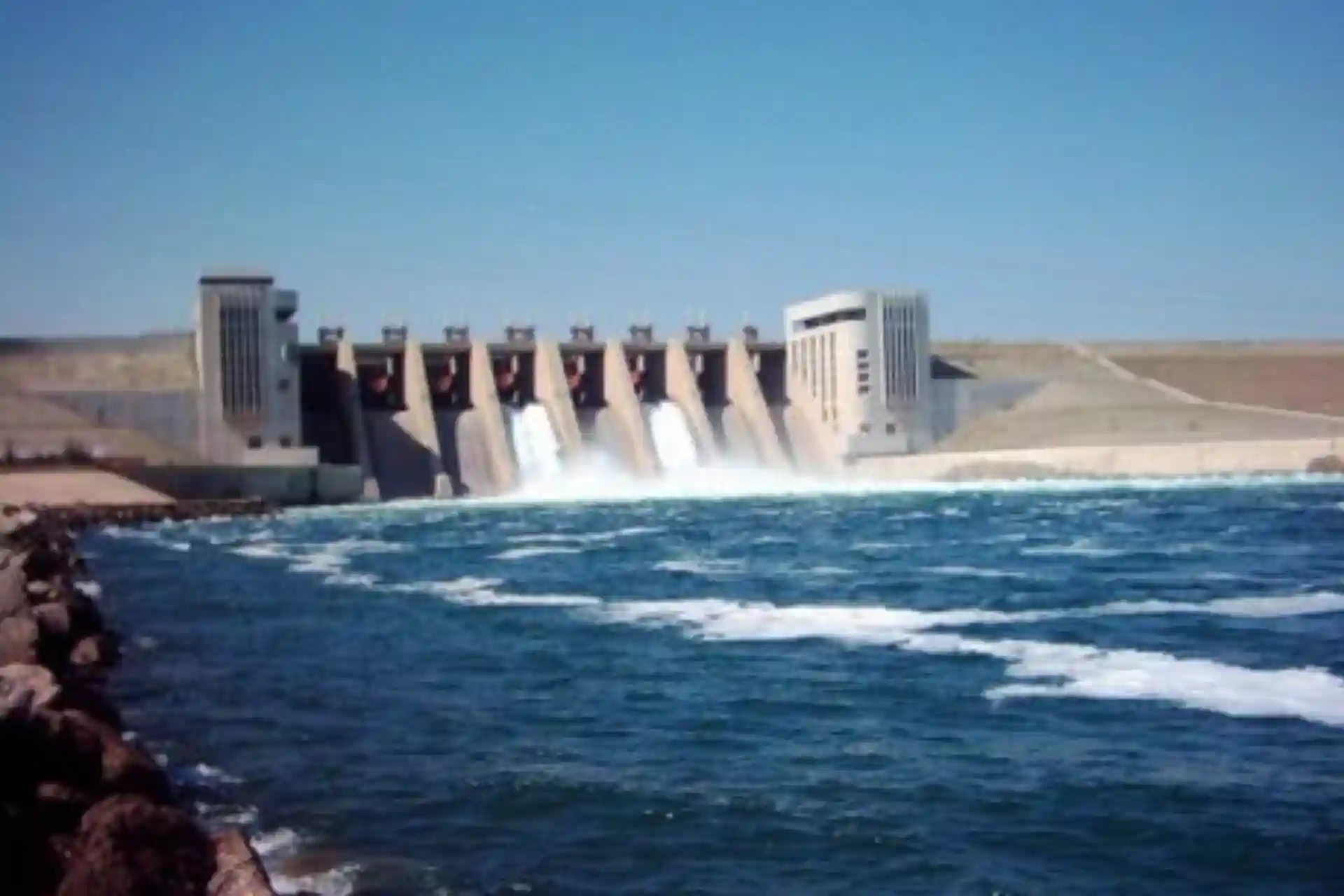21.03.2025 07:25
574
Israel is leaving Syria without water
Taking advantage of the collapse of the Assad government in Syria, Israel has seized new territory in southern Syria, including the Al-Mantara Dam, and has already begun implementing a long-standing Zionist strategy of securing regional dominance by stealing water from countries. It is creating water shortages to use as a political pressure tool to exchange water in exchange for normalizing relations with Syria.
Israel's incursion into southern Syria is a sign of its ongoing water ambitions. Reports indicate that the Zionist regime now controls 40 percent of the combined water resources of Syria and Jordan. For example, after capturing the Al-Wahda Dam in the Yarmuk Basin in December, Israeli forces moved towards the Al-Mantara Dam.
Israel is the main exporter of water to Jordan
The Yarmuk Basin is a strategically important area, forming part of the natural border between Syria and Jordan. The basin's main water source, the Yarmuk River, supplies water to the population and agricultural lands of the Daraa and As-Suwayda governorates, as well as northern Jordan.
The total length of the river is 57 km, of which 47 km flows through Syrian territory and the rest along part of the Syrian-Jordanian border. Syria has built several dams on its banks, in particular the Al-Wahda and Yarmuk dams, which have a capacity of 225 million cubic meters.
In addition to supplying drinking water to surrounding villages through large pumping networks such as the Taura Line, these dams are also used to irrigate vast agricultural lands, estimated to be approximately 13,640 hectares.
This important waterway has fallen victim to the Zionist regime's broader strategy to secure regional water dominance.
Despite these challenges, Israel's recent moves in southern Syria demonstrate a coherent strategy to address water scarcity through regional expansion. The political upheaval in Syria has provided the occupying organization with a historic opportunity to advance these ambitions.
Let us just recall that even early Zionist leaders like Chaim Weizmann emphasized the importance of water from areas such as the newly conquered Mount Hermon in Syria and the Litani River in Lebanon for irrigation and economic development.
Even the founder of Zionism, Theodor Herzl, insisted that the Zionist establishment should include southern Lebanon, partly because it held vital water resources. The Zionist movement exerted great pressure at the 1919 Paris Peace Conference to include the sources of the Jordan and Litani rivers in Syria and the Hauran Plain in British Mandate Palestine. However, these demands were rejected by France, which held the mandate over Syria and Lebanon.
In 1941, David Ben-Gurion, who later became the first Prime Minister of Israel, clearly stated what he wanted the future Zionist entity to do with R. Litani:
"We must remember that the Litani River must be within the borders of the Jewish state to ensure its viability," he said.
There is also the 1953 Johnston Project, which considered the Sea of Galilee to be the natural reservoir of the river's water, ignoring the political boundaries of the countries in the Jordan River basin. The Zionists planned to redirect the flow of the Jordan River in their own interests, and from 1953 they began to implement these plans through the Israeli company Mekorot.
Unfortunately, the Six-Day War, which Syria lost in 1967, was a turning point, as Israel gained control of water-rich areas such as the West Bank, the Gaza Strip, and the Golan Heights. These areas now provide a significant portion of Israel's water needs.
Currently, Palestinians face restrictions on water use. For example, Palestinians' per capita water consumption averages 20 cubic meters per year, compared to 60 cubic meters for Jews.
Sarvar Abdullaev, journalist
Israel's incursion into southern Syria is a sign of its ongoing water ambitions. Reports indicate that the Zionist regime now controls 40 percent of the combined water resources of Syria and Jordan. For example, after capturing the Al-Wahda Dam in the Yarmuk Basin in December, Israeli forces moved towards the Al-Mantara Dam.
Israel is the main exporter of water to Jordan
The Yarmuk Basin is a strategically important area, forming part of the natural border between Syria and Jordan. The basin's main water source, the Yarmuk River, supplies water to the population and agricultural lands of the Daraa and As-Suwayda governorates, as well as northern Jordan.
The total length of the river is 57 km, of which 47 km flows through Syrian territory and the rest along part of the Syrian-Jordanian border. Syria has built several dams on its banks, in particular the Al-Wahda and Yarmuk dams, which have a capacity of 225 million cubic meters.
In addition to supplying drinking water to surrounding villages through large pumping networks such as the Taura Line, these dams are also used to irrigate vast agricultural lands, estimated to be approximately 13,640 hectares.
This important waterway has fallen victim to the Zionist regime's broader strategy to secure regional water dominance.
Despite these challenges, Israel's recent moves in southern Syria demonstrate a coherent strategy to address water scarcity through regional expansion. The political upheaval in Syria has provided the occupying organization with a historic opportunity to advance these ambitions.
Let us just recall that even early Zionist leaders like Chaim Weizmann emphasized the importance of water from areas such as the newly conquered Mount Hermon in Syria and the Litani River in Lebanon for irrigation and economic development.
Even the founder of Zionism, Theodor Herzl, insisted that the Zionist establishment should include southern Lebanon, partly because it held vital water resources. The Zionist movement exerted great pressure at the 1919 Paris Peace Conference to include the sources of the Jordan and Litani rivers in Syria and the Hauran Plain in British Mandate Palestine. However, these demands were rejected by France, which held the mandate over Syria and Lebanon.
In 1941, David Ben-Gurion, who later became the first Prime Minister of Israel, clearly stated what he wanted the future Zionist entity to do with R. Litani:
"We must remember that the Litani River must be within the borders of the Jewish state to ensure its viability," he said.
There is also the 1953 Johnston Project, which considered the Sea of Galilee to be the natural reservoir of the river's water, ignoring the political boundaries of the countries in the Jordan River basin. The Zionists planned to redirect the flow of the Jordan River in their own interests, and from 1953 they began to implement these plans through the Israeli company Mekorot.
Unfortunately, the Six-Day War, which Syria lost in 1967, was a turning point, as Israel gained control of water-rich areas such as the West Bank, the Gaza Strip, and the Golan Heights. These areas now provide a significant portion of Israel's water needs.
Currently, Palestinians face restrictions on water use. For example, Palestinians' per capita water consumption averages 20 cubic meters per year, compared to 60 cubic meters for Jews.
Sarvar Abdullaev, journalist

